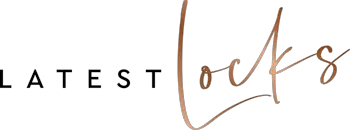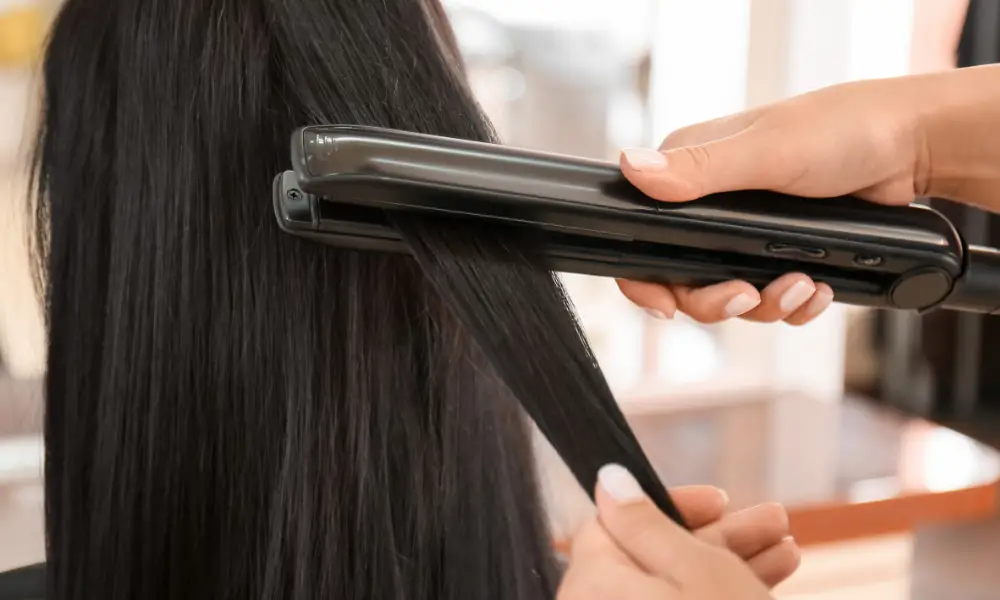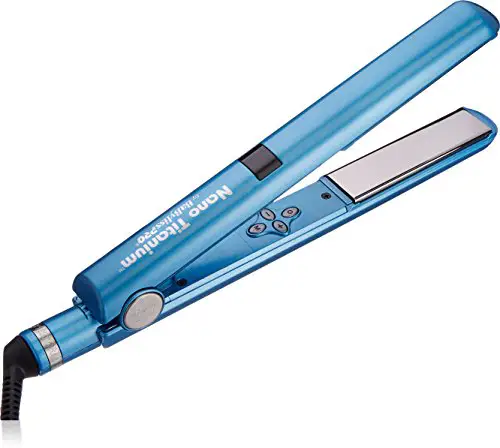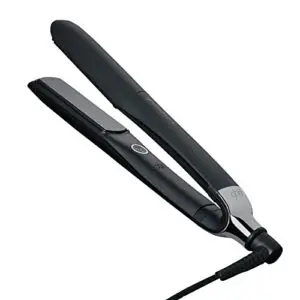What Is The Best Straightener for 4C Hair?
We’ve tested and reviewed the best straighteners for 4c hair on the market. Our top recommendation is the BabylissPRO Nano Titanium 1" Digital Straightener.
The Types of Flat Irons for 4C Hair
Navigating the wide array of flat irons on the market can be challenging when you have 4C hair. It’s important to select a flat iron that is compatible with your hair type. With so many options available, it’s essential to know which flat irons are best suited for your hair type. Ceramic, titanium, and tourmaline-infused flat irons have gained popularity among those with 4C hair, as they provide even heat distribution, reduce the risk of heat damage, and give you a smooth, frizz-free finish.
Ceramic Flat Irons
Ceramic flat irons are renowned for their even heat distribution and gentle straightening properties. They are an excellent option for daily use and touch-ups, as they maintain heat effectively without causing damage to the hair.
Titanium Flat Irons
Titanium flat irons are known for their rapid heating capabilities and their ability to reduce frizz, resulting in a smooth look.
Tourmaline-Infused Flat Irons
Tourmaline-infused flat irons emit negative ions that help reduce static and enhance shine, making them a popular choice for those with 4C hair.
Straightening Techniques for 4C Hair
When it comes to straightening 4C hair, proper technique is crucial to achieve a perfect silk press without causing heat damage. As someone with 4C hair, I only opt for a silk press every 3 to 4 months when I require a trim, and I straighten my hair without using heat in between. It is generally advised to straighten 4C hair no more than once a month to minimize the risk of heat damage.
Before diving into the straightening process, it’s essential to prepare your hair by using a clarifying shampoo, applying a leave-in conditioner, and sectioning your hair into manageable parts. Proper sectioning and detangling will ensure even heat distribution and prevent breakage during the straightening process.
Preparing Your Hair
The first step in preparing your hair for getting it hair straight is to cleanse it with a clarifying shampoo to remove any dirt and product residue that may be clogging your cuticles. After cleansing, apply a leave-in conditioner to nourish and protect your hair before blow-drying.
Divide your hair into eight sections to make it easier to manage and minimize heat exposure during the blow-drying process. Starting with clean hair is essential to prevent heat-related damage and achieve a long-lasting, silky press, while also considering your hair texture.
Sectioning and Detangling
Sectioning and detangling your hair before straightening is key to avoiding half-straight, half-curly hair and ensuring even heat distribution. Use a wide-toothed comb or your fingers to gently detangle your hair, working from the tips to the roots to minimize breakage. Apply a smoothing balm or serum, like the Smooth N’ Shine Conditioning Polisher or Milbon Weightless Replenishing Spray, to help with sectioning and detangling.
After detangling, use a Denman brush to blow-dry your hair, extending the hair cuticle and making it more manageable for straightening. Proper sectioning and detangling will not only ensure even heat distribution but also help prevent breakage during the straightening process.
Temperature Control
Selecting the appropriate temperature settings for your 4C hair is crucial to avoid heat damage and achieve the desired results. The optimal temperature range for straightening 4C hair is 390°F to 450°F. When choosing a flat iron, look for one with adjustable temperature settings, such as the flat iron mentioned in the source section, which has a temperature range of 265°F-450°F. Digital temperature display, power indicator, and temperature control features are must-have elements for precise temperature regulation. They enable the user to fine-tune temperature settings with precision.
Additionally, using a heat protectant prior to styling can create a protective barrier over hair strands and limit direct heat exposure to the cuticles, further minimizing the risk of heat damage.
Essential Features to Look for in a Flat Iron
When selecting a flat iron for your 4C hair, it’s essential to consider key features such as plate material, plate size, and adjustable temperature settings. Titanium, ceramic, or tourmaline plates are the recommended options for 4C hair, as they provide even heat distribution and minimize the risk of heat damage.
A plate size of 1 inch or greater is recommended for 4C hair, as it allows for better control and precision during the straightening process. Adjustable temperature settings enable you to customize the heat according to your hair type, ensuring optimal results and minimal damage.
Plate Material
The choice of plate material is crucial for the health and appearance of your 4C hair. Ceramic plates provide even heat distribution and effectively maintain heat without causing damage, making them a popular choice for those with 4C hair. Ceramic flat irons, such as the ghd Platinum + Professional Performance Styler and the Paul Mitchell Pro Tools Express Ion Smooth + Ion. Flat irons are excellent choices for gentle, effective straightening.
Titanium plates, on the other hand, offer rapid heating capabilities and reduced frizz for a sleek finish. The Croc Classic Nano-Titanium Flat Iron and the BaByliss Nano Titanium Flat Iron are two top titanium flat irons suitable for 4C hair.
Tourmaline-infused plates, like those found in the Conair Infinity Pro Tourmaline Ceramic Flat Iron, emit negative ions that help reduce static and enhance shine, making them a popular choice for those with 4C hair.
Plate Size
When it comes to plate size, the ideal size for 4C hair depends on your hair length and thickness. A plate size of 1 inch to 1 1/4 inch is recommended for most 4C hair types, as it allows for better control and precision during the straightening process.
However, for short to medium-length natural hair, especially for those with thick hair, a plate larger than 1 1/4 inch is not recommended, as it may be difficult to maneuver and may not provide the desired results.
Adjustable Temperature Settings
Adjustable temperature settings are essential when selecting a flat iron for 4C hair, as they allow you to customize the heat according to your hair type and minimize the risk of heat damage. A temperature range of 390°F-450°F is recommended for straightening 4C hair. Features such as digital temperature display, power indicator, and temperature control should be taken into account when selecting a flat iron with adjustable temperature settings.
For example, the flat iron mentioned in the source section offers adjustable temperature settings, with a temperature range of 265°F-450°F, making it suitable for different hair types and textures. Using a flat iron with adjustable temperature settings can help protect your hair from excessive heat exposure and ensure optimal straightening results.
How to Maintain Healthy 4C Hair While Straightening
Maintaining the health of your 4C hair while straightening is essential to prevent heat damage and keep your tresses looking their best. Limiting heat usage, using a heat protectant, and incorporating deep conditioning treatments into your hair care routine can help keep your hair healthy and strong.
In addition to these tips, using the right products can also make a significant difference in the health and appearance of your 4C hair. Applying a smoothing balm or serum prior to flat ironing, such as the Smooth N’ Shine Conditioning Polisher or Milbon Weightless Replenishing Spray, can help protect against heat damage and impart a glossy finish to the hair.
Limiting Heat Usage
Restricting heat usage is crucial to maintain the integrity of your natural hair and prevent heat damage, which can lead to breakage, weaken the hair, and make it more vulnerable to damage. To minimize heat usage when straightening 4C hair, apply a heat protectant prior to styling, such as the one mentioned in the source section, to create a protective barrier over hair strands and limit direct heat exposure to the cuticles.
Using the lowest heat setting possible and not using the straightener for extended periods of time can also help reduce heat exposure and maintain the health of your 4C hair. By limiting heat usage, you can enjoy the benefits of straightening your hair while keeping it healthy and strong.
Deep Conditioning Treatments
Incorporating deep conditioning treatments into your hair care routine can help maintain the health of your 4C hair while straightening. Deep conditioning treatments, such as deep conditioners, leave-in conditioners, and hot oil treatments, provide moisture, help prevent damage, and restore the hair’s natural shine and elasticity.
To utilize deep conditioning treatments, begin by shampooing and conditioning your hair. Apply the desired deep conditioning treatment and leave it on for the recommended time, then rinse it out and style your hair as usual.
Incorporating deep conditioning treatments into your hair care routine at least once a week can help keep your 4C hair healthy and strong while straightening.
Frequently Asked Questions
Which straightener is best for 4c hair?
Based on the advice of experts, a tourmaline flat iron is the best choice for 4c hair due to its universal flattery. This material distributes heat more evenly and is gentler on the hair, making it ideal for thick and curly hair.
Is ceramic or titanium better for 4c hair?
Based on the advice of experts, ceramic flat irons are better suited for soft and thin hair while titanium straighteners are recommended for thick and stubborn 4c hair.
Therefore, selecting the right type of flat iron depends on your individual hair texture.
How to flat iron black hair?
Follow these steps to flat iron black hair safely and without causing damage. Begin by prepping the hair with a heat protectant, then slowly pull the flat iron down from the roots in one smooth motion. Avoid rushing through this process as each additional pass may cause more damage.
Taking your time is essential for achieving the desired result.
How to curl hair with flat iron black hair?
For achieving the perfect curl with a flat iron for your black hair, make sure to start by using a heat protectant and then slowly clamp small sections of your hair between the plates of the straightener. Hold each section for just a few seconds as you slowly turn the flat iron and then release.
Finish off with a holding spray for long-lasting hold and volume. With these steps in mind, you’ll be able to quickly create beautiful, curly locks with your flat iron.
How to straighten black hair with a flat iron?
To safely straighten black hair with a flat iron, start at the roots and use one smooth motion as you pass down the strands. Go slow to ensure that each strand is straightened properly without causing damage.




